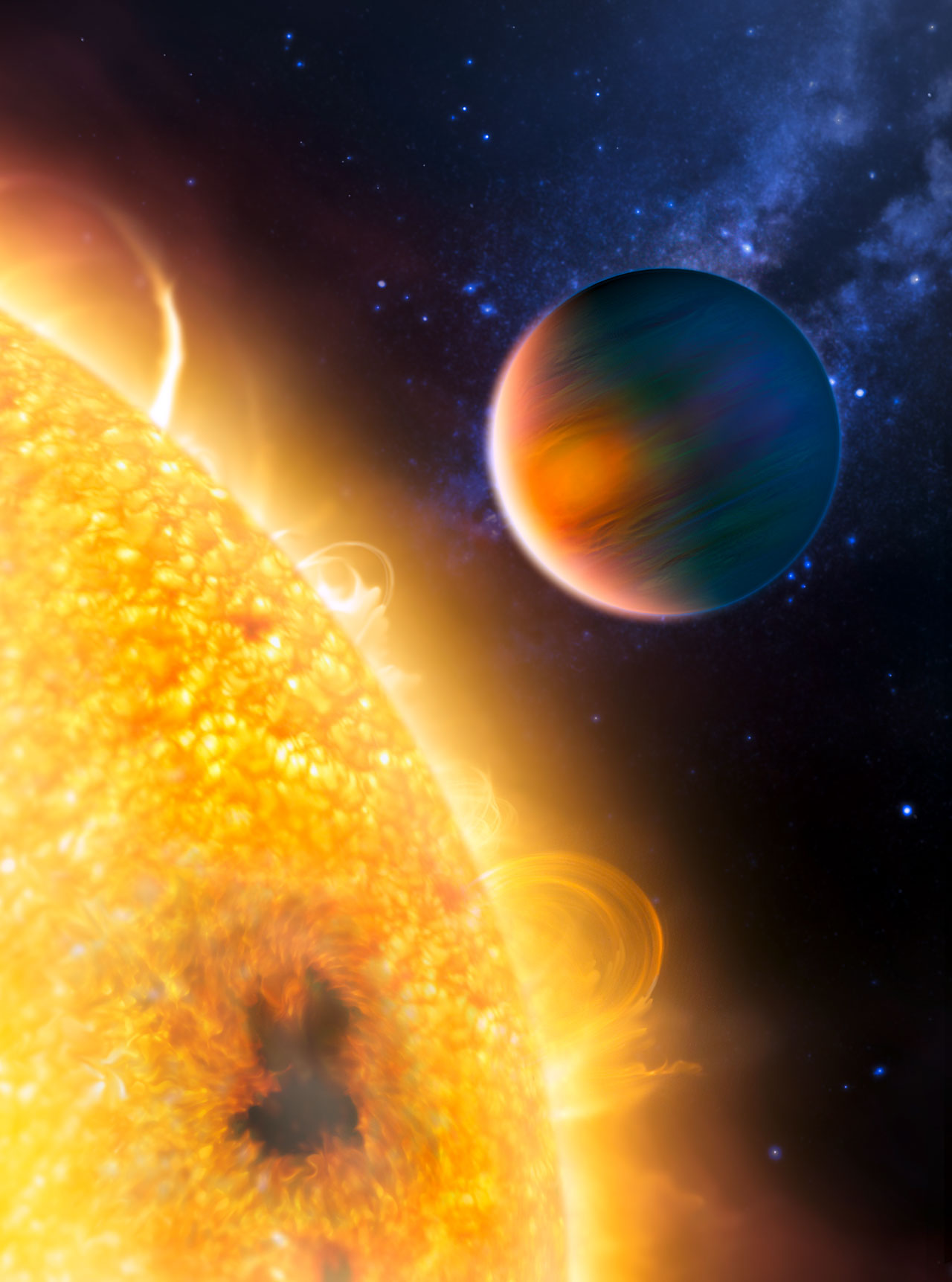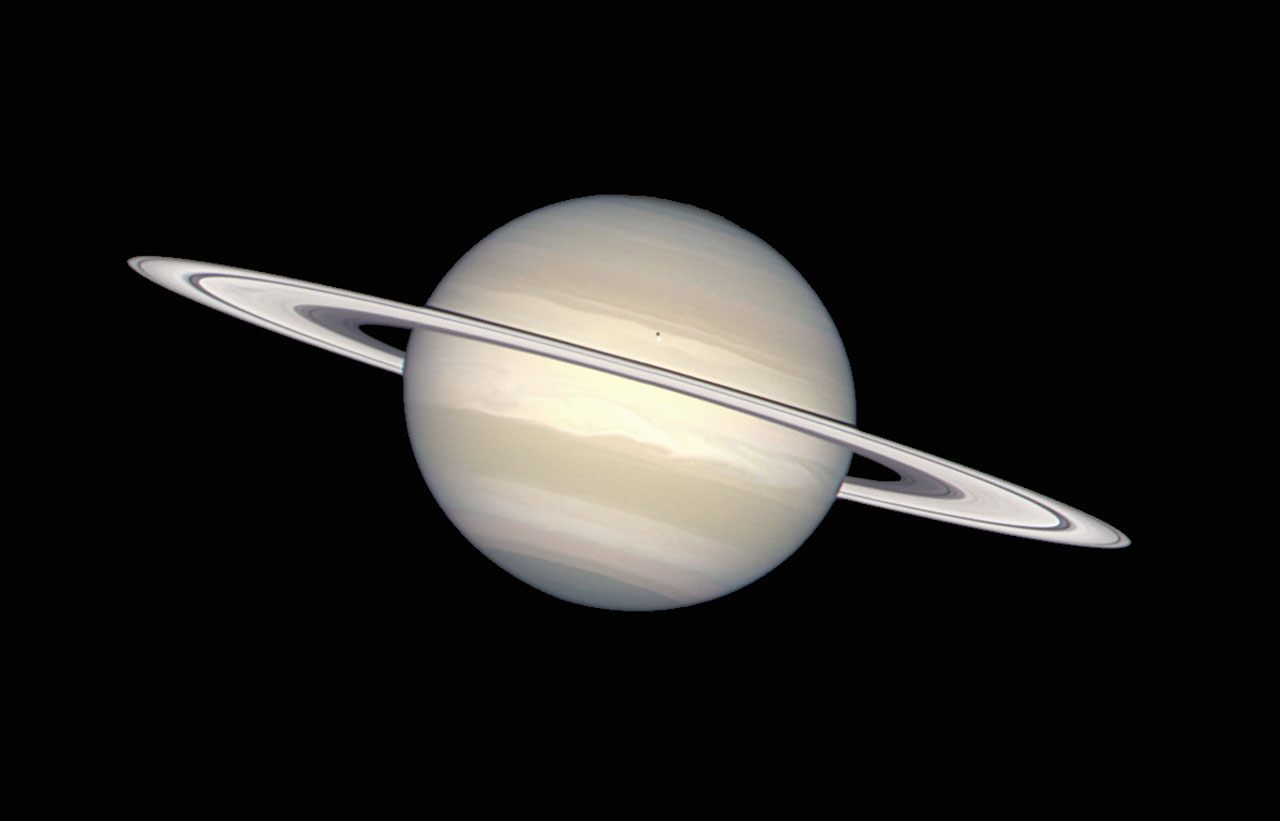
NASA/ESA Hubble Space Telescope has trained its razor-sharp eye on one of the universe's most stately and photogenic galaxies, the Sombrero galaxy, Messier 104 (M104). The galaxy's hallmark is a brilliant white, bulbous core encircled by the thick dust lanes comprising the spiral structure of the galaxy.

What resemble dainty butterfly wings are actually roiling cauldrons of gas heated to nearly 20 000 degrees Celsius. The gas is tearing across space at more than 950 000 kilometres per hour - fast enough to travel from Earth to the Moon in 24 minutes!

artist's impression of the extrasolar planet HD 189733b, now known to have methane and water. Astronomers used the Hubble Space Telescope to detect methane - the first organic molecule found on an extrasolar planet

The ring swirling around Saturn consists of chunks of ice and dust. Saturn itself is made of ammonia ice and methane gas. The little dark spot on Saturn is the shadow from Saturn's moon Enceladus.